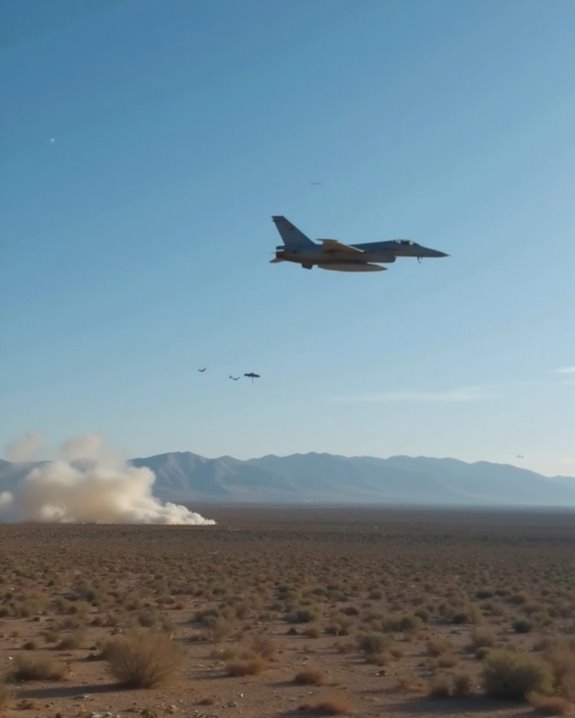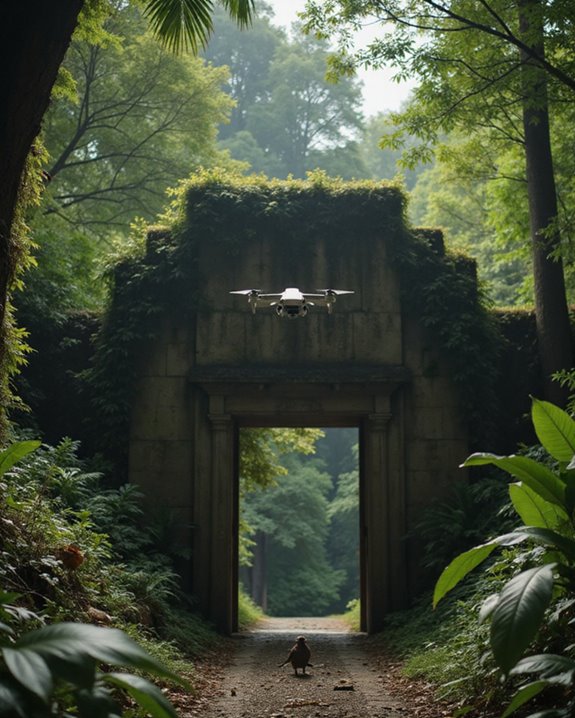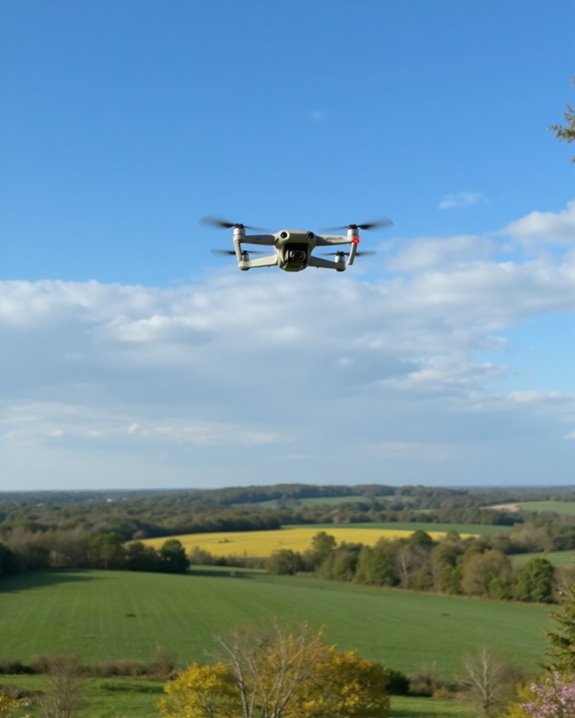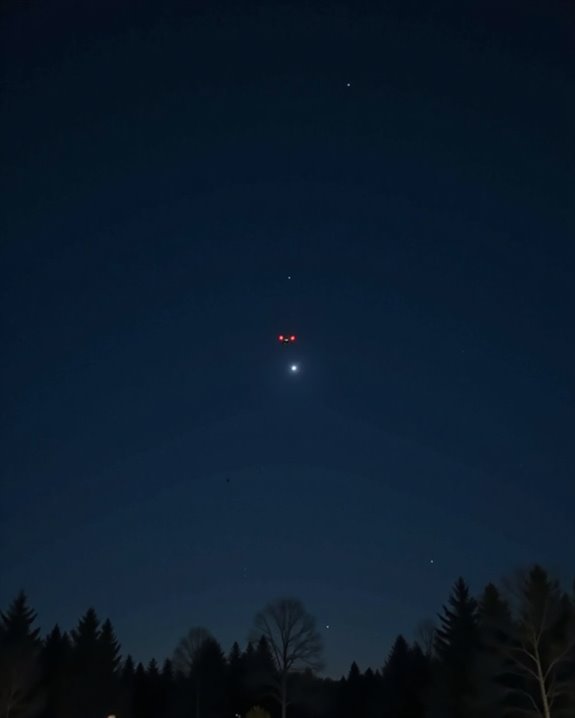The US took down Iranian drones with some serious teamwork and high-tech tools! Warships like the USS Carney relied on advanced radar, night vision goggles, and even heat-sensing EO/IR cameras to spot drones, whether it was a clear day or a pitch-black, dusty night. Crews fired Mark 45 naval guns or launched intercept missiles when threats appeared, with electronic jammers ready to disrupt hostile signals. Want to discover exactly how these operations kept the skies safe and the crews on their toes?
Key Takeaways
- US Navy ships like USS Carney used advanced radar and electro-optical sensors to detect approaching Iranian drones.
- Shipboard weapons, including Mark 45 5-inch guns, were employed to physically shoot down incoming drones and missiles.
- Night vision goggles and infrared cameras enabled crews to identify and target drones during low-visibility or nighttime conditions.
- Electronic jamming systems disrupted drone guidance and communications, increasing the likelihood of successful shootdowns.
- Coordination with air and ground-based radar networks provided early warnings and improved engagement success against hostile drones.
Timeline of US Engagements With Iranian Drones
Over the past few decades, the timeline of US engagements with Iranian drones reads almost like a high-stakes chess match—except, instead of pawns and knights, it’s high-tech flying machines and real-world consequences! The Initial Encounters date back to the Iran-Iraq War, when Iran first mass-produced basic drones. Fast-forward, and Iran’s drone technology has gotten way more advanced, with sophisticated surveillance and combat models popping up across the region. Subsequent Clashes grew sharper, especially after events like the US airstrike killing Qasem Soleimani in 2020, which triggered intense drone activity and tit-for-tat operations. US forces responded with airstrikes on Iranian targets and increased drone surveillance, while Iran retaliated with missile strikes and satellite launches, making the skies busier—and tenser—than ever. The US military has relied on highly portable and battle-tested drones like the RQ-11 Raven UAV to maintain accurate battlefield reconnaissance during these engagements.
The Role of the USS Carney in Drone Defense
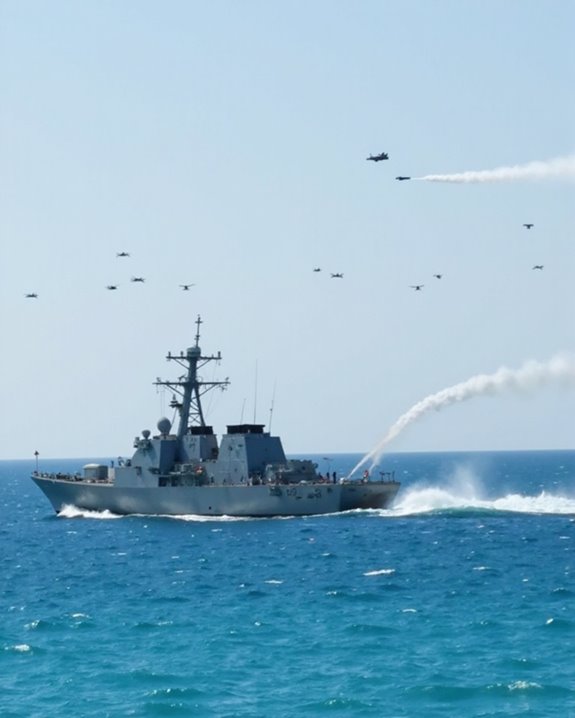
When it comes to defending against Iranian drones, the USS Carney takes center stage—think of it as the Navy’s high-tech shield in the Red Sea! This guided-missile destroyer faced down 51 drone engagements, shooting down 15 drones and four cruise missiles in just one epic 10-hour standoff. That’s not luck; it’s the result of intense personnel training and sharp mission logistics. Every sailor on Carney knows their role, from operating the Mark 45 5-inch gun to using the Mark 20 Electro-Optical Sensor System for precise targeting. The ship’s combat systems work together like a well-coached sports team—everyone is in sync. The Carney’s crew even earned combat medals for their actions, proving that skill and teamwork really do make history! For effective counter-drone defense, consulting certified counter-UAS training programs is crucial to prepare security professionals for real-world engagements.
Nighttime Operations and Detection Capabilities
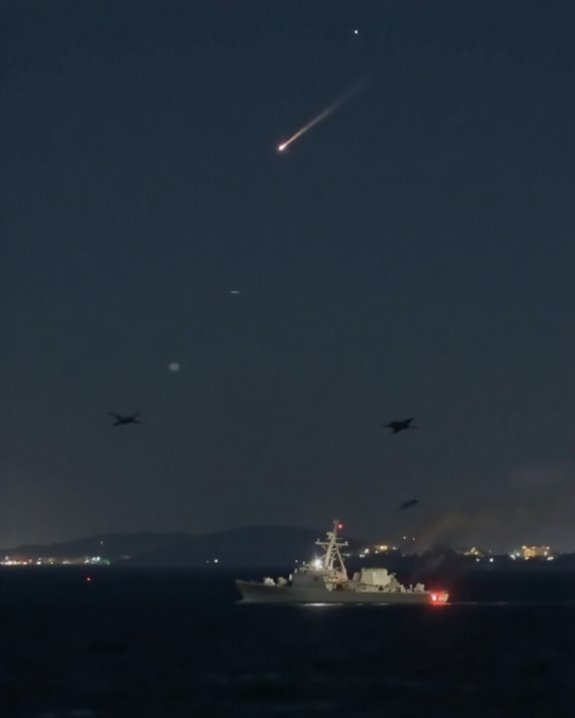
Of course, all that teamwork aboard the USS Carney means nothing if you can’t spot a sneaky drone in the dark! Night training is critical—crews must learn to use night vision goggles and EO/IR (electro-optical/infrared) cameras, which help them see heat signatures and faint outlines when regular eyes can’t. Radar systems scan for unusual electromagnetic signals, picking out drones even when clouds, fog, or sand are swirling around. Environmental factors, like moonless nights or dust storms, make things tricky, but dual-sensor payloads and multi-spectral sensors help fill in the gaps. Sometimes Iranian drones try to fly low or slow to hide, so teams have to be sharp, combining electronic surveillance, thermal cameras, and quick thinking to tell friend from foe—no easy task! Advanced technologies such as AI Night Shot enhance detection capabilities in after-dark operations.
Advanced Weapon and Radar Systems Used

Gadgets galore fill the decks and skies when it comes to stopping Iranian drones! The U.S. military relies on radar upgrades—imagine ground-based radar that can spot sneaky, low-flying drones hiding in the clutter. These radars, paired with electronic jamming systems, turn incoming drones’ signals into scrambled eggs, disrupting their navigation and communications mid-flight. On top of that, F-15E Strike Eagles, armed with advanced targeting gear, zip through the air, joining Patriot missile batteries and Arrow interceptors in a high-stakes game of whack-a-mole. There’s serious teamwork, too: U.S. and Israeli radar networks talk to each other, sharing tracking data and warnings. Layers of defense—from cyberattacks to kinetic interceptors—combine to outsmart and outgun the latest Iranian drone swarms.
Legal Frameworks Governing Drone Shootdowns
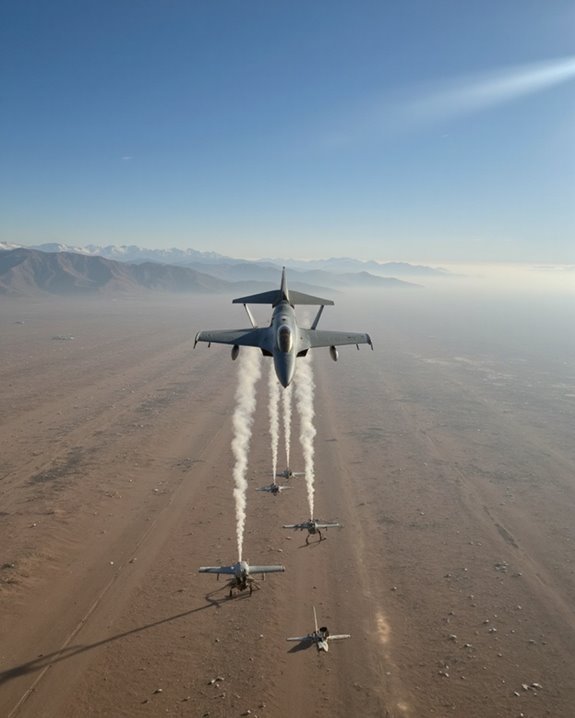
High-tech missiles and powerful radar systems are impressive, but stopping Iranian drones isn’t just about who has the flashiest gear. Legal Ethics and Accountability Measures play a huge role! International law, like the United Nations Charter, sets strict rules—no shooting just because you feel like it. Article 51 says self-defense is okay, but only if there’s a real threat. The Geneva Conventions demand military actions, including drone shootdowns, protect civilians and differentiate between military targets and bystanders. The Chicago Convention gives countries total control over their airspace, so drones flying in without permission are a big legal “no-no.” If a country breaks these rules, international condemnation and legal trouble can follow. So, before missiles fly, lawyers definitely have their say!
Regional and Global Strategic Implications
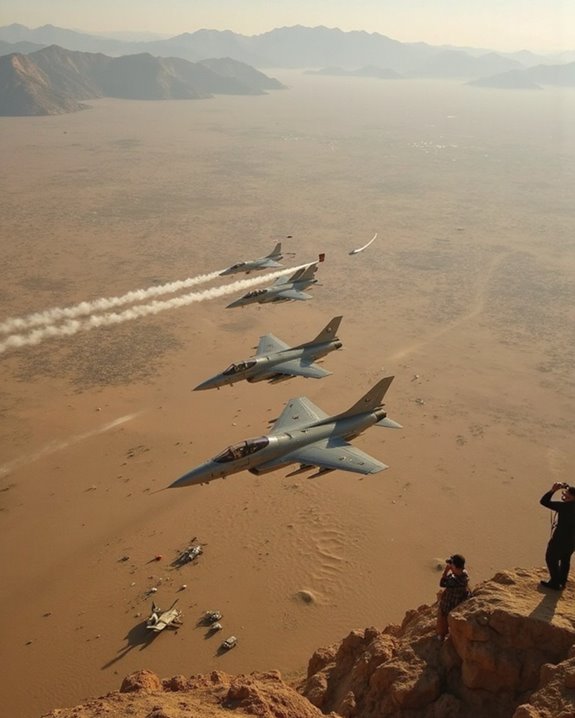
Ever wonder why shooting down an Iranian drone makes headlines around the world? It’s not just about sparks flying in the sky—it’s about Diplomatic Tensions and Power Shifts! When the US intercepts a drone, everyone from the United Nations to your local news anchor takes notice. Each incident can trigger new alliances, strain trade relationships, or even push countries toward economic sanctions. These shootdowns send a clear message about who has control in the region and who’s willing to flex their muscles. Plus, it’s a high-stakes chess game: one move can tip the balance of power between nations or ignite fresh debates on international law. Even cyber spies might be on edge, hoping those downed drones don’t reveal any secrets!
Evolving Technology in Drone Warfare and Countermeasures
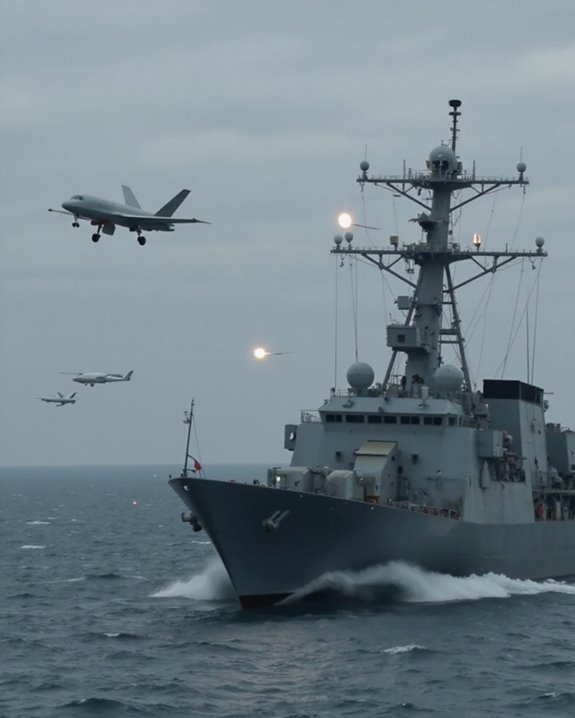
How exactly have drones turned into such game-changers on the modern battlefield? Well, imagine this: drones built with super-lightweight materials, packed with AI brains, flying in swarms like mechanical bees! These aren’t just toys—they zip over long distances, gathering intel or even striking targets. But with all this cool tech comes big Ethical Concerns. For example, who’s responsible if an AI drone makes a mistake? Counter-drone tech is getting wild too—think lasers slicing through the sky, or microwave systems like Leonidas zapping drones without blowing things up. With drones multiplying everywhere, Global Cooperation is more important than ever. Countries work together on legal rules and cybersecurity, trying to keep one step ahead in this non-stop tech race. The future? Definitely not boring!
Frequently Asked Questions
What Happens to the Debris After a Drone Is Shot Down?
After a drone is shot down, debris disposal involves specialized recovery and safe handling. Environmental impact is minimized through hazardous waste management, regulatory compliance, and recycling efforts, ensuring debris is processed at approved facilities with attention to safety and contamination prevention.
Are Crew Members Specifically Trained for Drone Engagements?
As the saying goes, “practice makes perfect.” Crew members undergo rigorous training simulations and achieve crew certification specifically for drone engagements, ensuring they are thoroughly prepared and proficient in operational procedures, tactical response, and evolving counter-drone technologies.
How Are Drone Threats Communicated to Nearby Civilian Vessels?
Drone threat alerts are communicated to nearby civilian vessels through established signal protocols, including VHF radio and AIS broadcasts. Authentication measures, layered communication channels, and cybersecurity protocols guarantee reliable, secure transmission of warnings and instructions to enhance maritime safety.
Do Drone Shootdowns Affect Shipping Insurance Rates in the Region?
Insurance hikes in the region are influenced by multiple risk factors, including drone shootdowns. While not always singled out, such incidents contribute to the broader risk environment, prompting insurers to reassess premiums and coverage for affected shipping routes.
Can Downed Drones Be Recovered and Analyzed for Intelligence?
The current question concerns whether downed drones can be recovered and analyzed for intelligence. Such recovery enables intelligence uses, including data extraction and forensic analysis, though forensic ethics must guide handling of sensitive electronics and any personal or adversarial information obtained.

